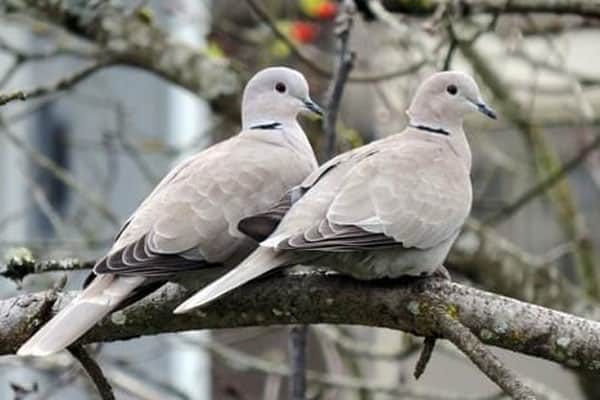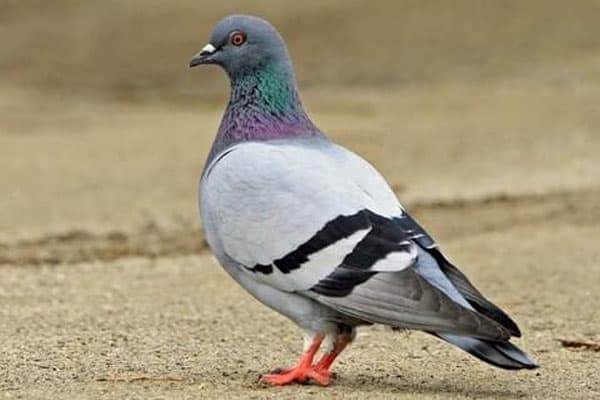Indiana is home to a variety of doves species, each with its own unique features and behaviors. In this article, we’ll explore the four main types of doves you’re likely to spot in the Hoosier State: the mourning dove, Eurasian collared-dove, rock pigeon, and the rare white-winged dove. Whether you’re an avid birdwatcher or simply enjoy observing the natural world, learning to identify these feathered wonders can enhance your appreciation for the diverse wildlife found in Indiana.
Main points to note:
- Indiana is home to four main types of doves: mourning dove, Eurasian collared-dove, rock pigeon, and the rare white-winged dove.
- Mourning doves are the most common dove species in Indiana, known for their soft, mournful cooing calls and distinctive long, tapered tails.
- Eurasian collared-doves are a relatively recent arrival in Indiana, with their distinctive black collar and grayish-brown plumage.
- Rock pigeons are a familiar sight in many Indiana communities, easily recognized by their stocky build and iridescent feathers.
- The white-winged dove is a rare visitor to Indiana, with its unique white wing patches and distinctive call.
Introducing Indiana’s Feathered Beauties
Indiana is home to a diverse array of dove species, each with its own unique characteristics and charm. Among the most captivating of these are the graceful mourning dove and the exotic Eurasian collared-dove.
1. Graceful Mourning Dove

The mourning dove is undoubtedly the most common dove species found in Indiana. These elegant birds are renowned for their soft, mournful cooing calls and their distinctive long, tapered tails. Mourning doves are remarkably adaptable and can be spotted in a variety of habitats, from rural farmlands to urban backyards, making them a familiar sight across the Hoosier State.
2. Eurasian Collared-Dove

In contrast to the ubiquitous mourning dove, the Eurasian collared-dove is a relative newcomer to Indiana. These intriguing birds, with their distinctive black collar and sleek, grayish-brown plumage, have only recently expanded their range into the state. Though not as numerous as their mourning dove counterparts, Eurasian collared-doves are gradually becoming more common sights in various Indiana habitats, adding to the diverse tapestry of the state’s avian life.
Doves in Indiana: Habitats and Behaviors
As we explore the diverse world of doves found in Indiana, let’s delve into the habitats they inhabit and the unique behaviors they exhibit. From the ubiquitous mourning dove to the elusive white-winged dove, each species has its own preferences and adaptations that allow them to thrive in the Hoosier State.
Where to Find Them
The mourning dove and rock pigeon are the most commonly sighted doves in Indiana. These resilient birds can be found in a variety of settings, from open fields and parks to urban areas and backyard feeders. The Eurasian collared-dove, a relative newcomer to the state, has also become more prevalent in recent years, though it may require a bit more effort to spot. The rare white-winged dove, on the other hand, is more likely to be observed in specialized habitats like wetlands or forested areas.
Nesting and Breeding Patterns
Doves in Indiana exhibit a range of nesting and breeding behaviors. Mourning doves, for example, often build their flimsy nests in trees, bushes, or even on the ground, while rock pigeons prefer to nest on ledges, buildings, or other man-made structures. The Eurasian collared-dove, known for its distinctive black collar, typically nests in dense foliage or tree branches. Understanding these nesting preferences can help us better appreciate the adaptability and resilience of these feathered residents.
Unique Characteristics and Calls
Each type of dove found in Indiana possesses its own unique physical characteristics and vocalizations. The mourning dove is renowned for its soft, mournful cooing, while the rock pigeon is known for its distinctive head-bobbing motion and the Eurasian collared-dove’s call is a rapid, repetitive series of notes. The rare white-winged dove, with its striking white wing patches, is a visual delight for birdwatchers. Appreciating these distinctive features can deepen our connection to the doves that call Indiana home.
| Dove Species | Habitat | Nesting Preferences | Unique Characteristics |
|---|---|---|---|
| Mourning Dove | Open fields, parks, backyards | Trees, bushes, ground | Soft, mournful cooing call |
| Eurasian Collared-Dove | Urban areas, suburban neighborhoods | Dense foliage, tree branches | Distinctive black collar |
| Rock Pigeon | Urban areas, parks, buildings | Ledges, man-made structures | Head-bobbing motion, iridescent feathers |
| White-winged Dove (rare) | Wetlands, forested areas | Dense vegetation | Striking white wing patches |
Identifying the Rock Pigeon and White-Winged Dove
3. Rock Pigeon
While the rock pigeon is a ubiquitous presence across Indiana, the white-winged dove is a rarer sight. The rock pigeon, also known as the common pigeon, is easily recognizable by its stocky build, iridescent feathers, and the characteristic head-bobbing motion it exhibits as it walks or perches. These adaptable birds have made themselves at home in urban and suburban areas throughout the Hoosier State, coexisting alongside us in our parks, backyards, and cityscapes.

4. White-winged dove
In contrast, the white-winged dove is a more elusive species in doves in Indiana. With its distinctive white wing patches and slender, elegant appearance, the white-winged dove is a treat to spot for avid birdwatchers. These doves are typically found in the southern regions of the state, where they may venture in small numbers to take advantage of the suitable habitat and resources.
Check Our Previous Posts:
Recognizing the unique features and behaviors of the rock pigeon and the white-winged dove can enhance our appreciation for the diverse doves in Indiana and their role in the state’s vibrant avian community. By learning to identify these feathered wonders, we can deepen our connection to the natural world around us and become more informed observers of the remarkable avian life that thrives in our communities.


Add comment